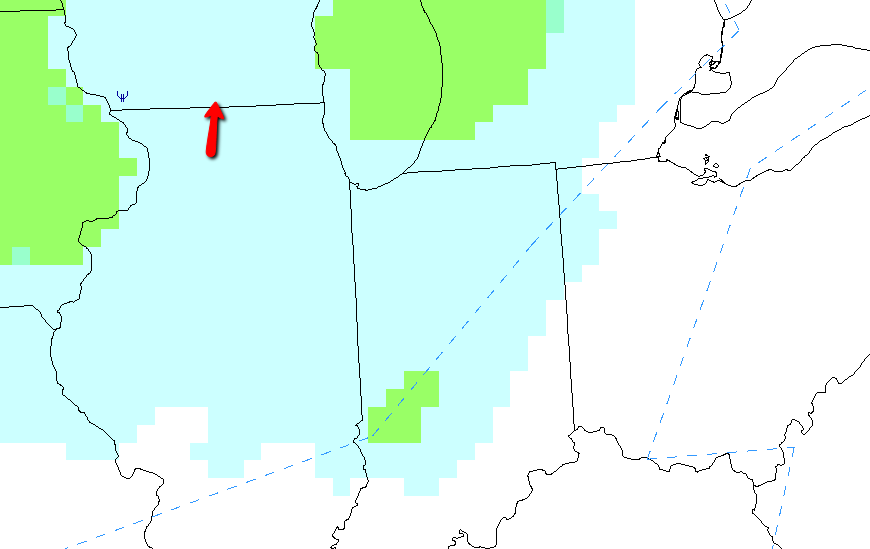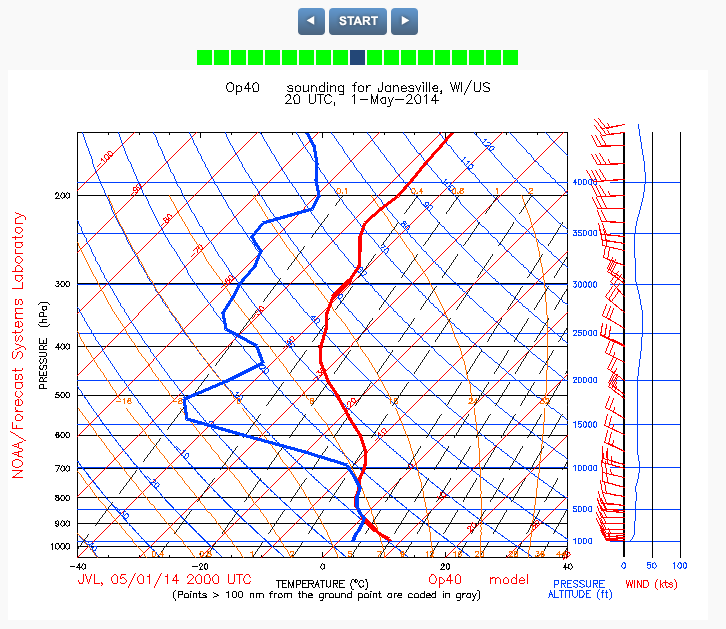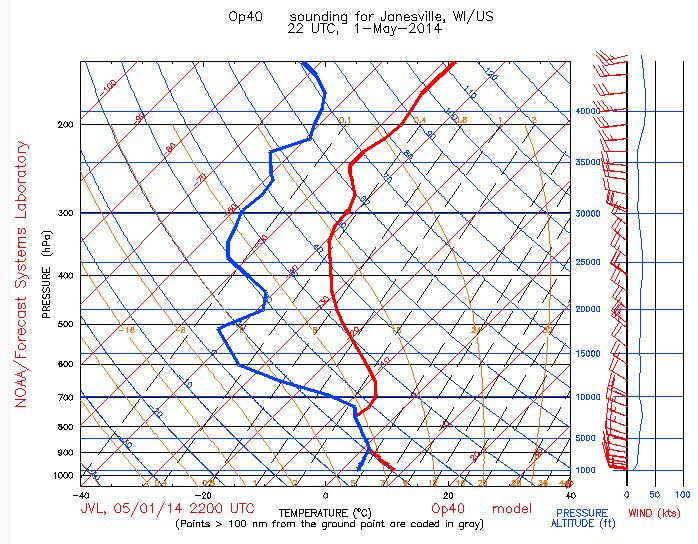mikegreen
Pre-takeoff checklist
Heading Dayton to Janesville WI area (for reference: it is just into WI from IL, right in the halfway point between Iowa and Lake Michigan) tmrw afternoon sometime... Highs are around 45f. May folks, May! I grew up in Florida where we're swimming by now. I digress (and need to move back).
The MEA/MOCA and OROCA along the whole route is 3100msl. There are MOCA's down to 2200 and 2600. To get a lower MEA/MOCA do I have to be on the airway, like here I could get 3100 over JOT, but to get 2600 I'd need to be on this airway with the box around its MEA?

My initial thought is to file at 4000, see how that goes and be ready to A) request the lowest MOCA/OROCA where I'd be out of the clouds based on the TAFs - showing broken/ovc 3500-4500msl along the route.. or B) duck out of it and go VFR at 2500, which is good for the route (I'm pretty familiar with it) given the 600-900 foot terrain.
Thoughts?
Supporting cast members...first, ceiling forecast:
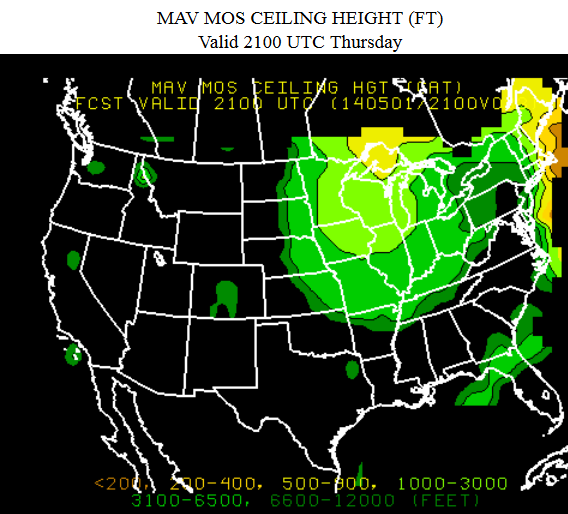
Icing forecast @ 3000 (neg @ 1000.. but 1000msl up there is only 500 AGL)
(from http://aviationweather.gov/icing/fip)
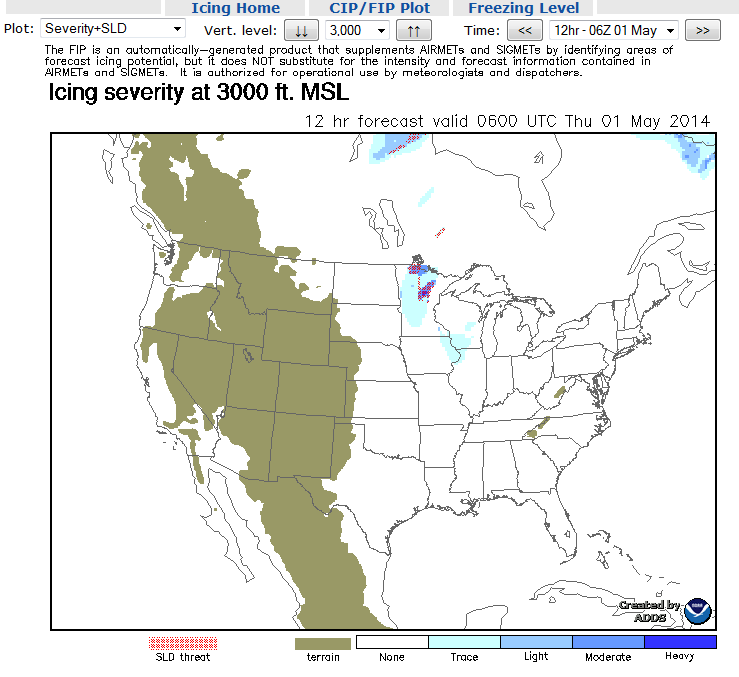
and at 5000:

freezing level forecast:
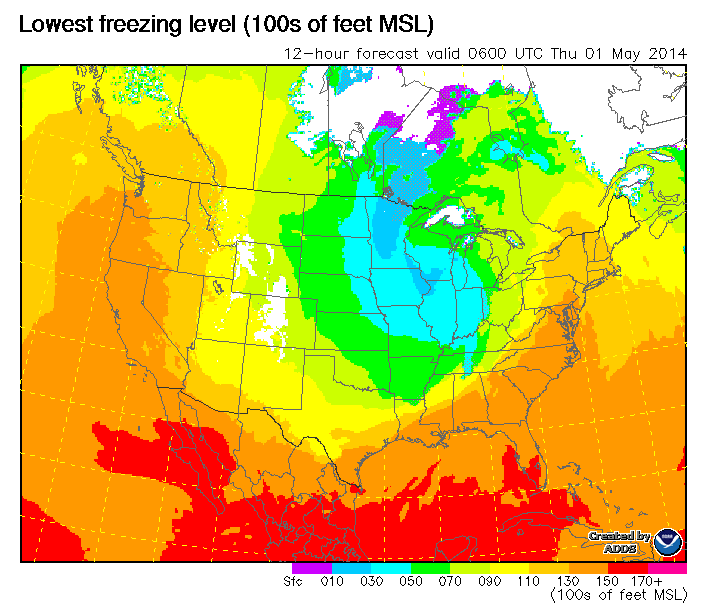
skew-t for roughly same timeframe:
(from avwxworkshops.com)
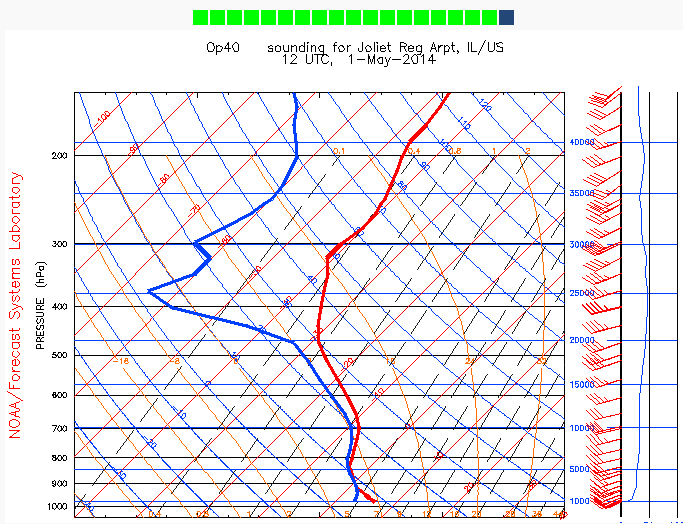
The MEA/MOCA and OROCA along the whole route is 3100msl. There are MOCA's down to 2200 and 2600. To get a lower MEA/MOCA do I have to be on the airway, like here I could get 3100 over JOT, but to get 2600 I'd need to be on this airway with the box around its MEA?

My initial thought is to file at 4000, see how that goes and be ready to A) request the lowest MOCA/OROCA where I'd be out of the clouds based on the TAFs - showing broken/ovc 3500-4500msl along the route.. or B) duck out of it and go VFR at 2500, which is good for the route (I'm pretty familiar with it) given the 600-900 foot terrain.
Thoughts?
Supporting cast members...first, ceiling forecast:

Icing forecast @ 3000 (neg @ 1000.. but 1000msl up there is only 500 AGL)
(from http://aviationweather.gov/icing/fip)

and at 5000:

freezing level forecast:

skew-t for roughly same timeframe:
(from avwxworkshops.com)


